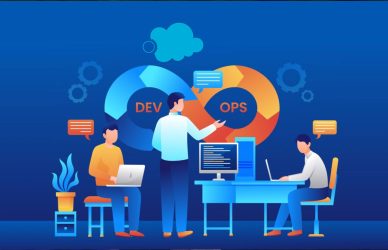Introduction: Why 2025 Is the Perfect Time to Join Cloud Computing
If you’ve ever considered a career change to cloud computing, 2025 is your year. With cloud roles expanding across industries, it’s no longer just a field for software engineers. From project managers to teachers and military veterans, people from non-tech backgrounds are successfully transitioning into cloud roles thanks to accessible learning paths and a rising demand for cloud talent.
According to Gartner, global cloud spending will surpass $700 billion in 2025, fueling demand for a diverse workforce. The good news? You don’t need a computer science degree to get started—just the right mindset, roadmap, and resources.
Why Cloud Careers Are a Top Choice for Career Switchers
1. Demand Across All Industries
Healthcare, finance, e-commerce, manufacturing, and education all rely on cloud infrastructure. Cloud skills are now essential even in roles that don’t involve coding.
2. High Salaries and Remote Flexibility
Cloud roles offer attractive compensation, even at entry levels. In 2025, entry-level cloud professionals earn $70,000–$90,000, with senior roles exceeding $150,000. Most cloud jobs are fully remote or hybrid.
3. Room to Grow—Fast
The cloud landscape evolves rapidly, giving career switchers the chance to advance based on performance, not just tenure. Certifications and hands-on learning often matter more than formal degrees.
Step-by-Step Guide: How to Transition into Cloud Computing
Step 1: Learn the Basics of Cloud Concepts
Start by understanding what cloud computing is and how it’s used. Focus on:
- Cloud service models: IaaS, PaaS, SaaS
- Major providers: AWS, Microsoft Azure, Google Cloud
- Key principles: Scalability, virtualization, multitenancy
Free beginner resources:
- AWS Cloud Practitioner Essentials (Free)
- Microsoft Learn: Azure Fundamentals
- Google Cloud Skills Boost (Beginner track)
Step 2: Choose a Career Path That Matches Your Background
You don’t need to become a cloud architect right away. Start with roles that build on your transferable skills:
| Your Background | Ideal Entry-Level Role |
|---|---|
| Project Management | Cloud Project Coordinator |
| Finance/Admin | Cloud Billing Analyst |
| IT Support | Cloud Operations Associate |
| Marketing | Cloud Product Marketing Assistant |
| Education/Training | Cloud Enablement Specialist |
Each of these can be a launchpad into more technical or strategic cloud roles.
Step 3: Enroll in a Cloud Bootcamp or Certification Program
Structured programs can boost confidence, offer job-ready skills, and connect you with professionals.
Top beginner bootcamps (2025):
- CloudGuru / A Cloud Guru
- Simplilearn Cloud Computing Bootcamp
- Udacity Cloud DevOps Nanodegree
- Coursera + Google Cloud Career Certificate
Step 4: Get Certified to Boost Credibility
Even one entry-level certification can help you stand out:
- AWS Certified Cloud Practitioner
- Microsoft Certified: Azure Fundamentals
- Google Cloud Digital Leader
These certifications require no prior experience and are respected by employers worldwide.
Step 5: Build Hands-On Experience (Even Without a Job)
Set up a free-tier account and try real-world projects like:
- Deploying a static website on AWS S3
- Creating a virtual machine in Azure
- Hosting a WordPress blog on Google Cloud
Document your projects on LinkedIn or GitHub. Employers love seeing practical initiative.
Real-Life Success Stories
Sarah – From Kindergarten Teacher to Cloud Trainer
After teaching for 10 years, Sarah took an AWS bootcamp and now works as a Cloud Enablement Trainer for a healthcare tech firm. She leveraged her communication skills to teach teams how to use cloud tools effectively.
Mike – From Retail Manager to Cloud Support Associate
Mike spent 8 years managing retail stores. He transitioned into cloud tech via an online Azure course, earning his first certification within 3 months. He now handles L1 support for Azure services remotely.
Priya – From Accountant to Cloud Compliance Analyst
Priya used her finance background to pivot into a cloud governance role. After completing a Google Cloud compliance course, she was hired by a fintech startup monitoring cloud audits.
Beginner-Friendly Cloud Jobs You Can Apply for Today
Explore real listings at www.clouddevopsjobs.com, where jobs are curated for newcomers and experienced professionals alike.
Sample roles to search for:
- Cloud Support Specialist (No experience required)
- AWS Cloud Billing Analyst
- Cloud Deployment Assistant
- DevOps Intern (Remote)
- Azure Technical Account Coordinator
Pro Tip: Use filters like “Entry-Level,” “No Degree Required,” or “Cloud Practitioner” to find relevant opportunities.
Bonus: Tips for Non-Tech Applicants Breaking into Cloud
- Translate your soft skills (communication, problem-solving, time management) into tech contexts
- Network actively—attend virtual cloud meetups, Discord groups, and forums like r/aws and r/devops
- Pair study with practice—Don’t just watch videos; build and document mini-projects
Final Thoughts: Your Cloud Career Starts Now
The cloud computing field in 2025 is wide open for motivated professionals from all backgrounds. Whether you’re coming from teaching, retail, finance, or administration, the path to the cloud is more accessible than ever.
Start small. Stay consistent. And most importantly—start today.
Call to Action: Ready to Make the Leap?
Begin browsing entry-level cloud roles at www.clouddevopsjobs.com.
Filter by certification, experience level, and platform (AWS, Azure, GCP) to find your first job in the cloud tech industry.







